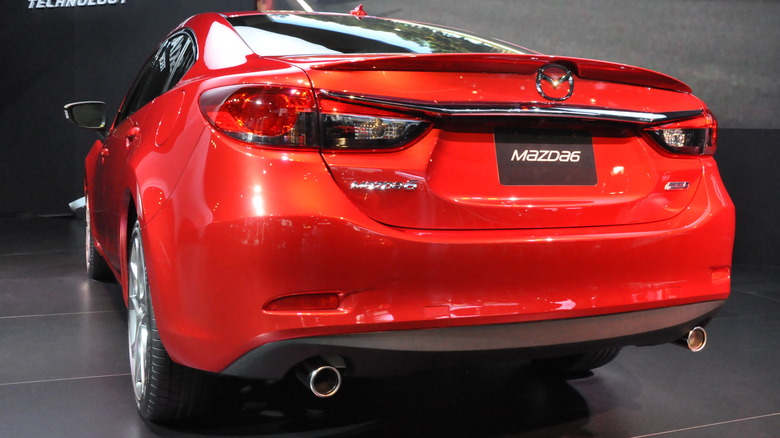The Unfortunate Mazda 6 Design That Attracted Spiders
Maintaining a used car can come with some challenges, including body rust, brake issues, and armies of spiders, apparently. In 2011 and then again in 2014, Mazda North America issued two recalls for its 2009 to 2012 model year Mazda 6 vehicles due to a design choice that left the cars vulnerable to spiders. This issue led to some fuel tanks cracking from pressure, an attempt to block the spiders using a spring, and the frustrating discovery that the spiders were evading the initial solution.
In spite of its creepy-crawly problem, the Mazda 6 is an excellent car – it simply happens to have an arrangement of lines, particularly the evaporative canister vent lines, that draws arachnid attention. In addition to being an arachnophobe's nightmare, spiders building webs in the EVAP lines can destructively alter the system's internal pressure (via NYT), creating additional stress that led to the aforementioned instances of cracked fuel tanks. Despite the Halloweenish absurdity of the cause, a depressurized fuel line and a cracked tank obviously constitute legitimate problems for Mazda owners. This was a real issue, but how on Earth did it happen?
Why were Mazda 6 cars attracting spiders?
At the heart of this problem was the yellow sac spider, a particularly common variety of spiders in the Americas. Yellow sac spiders are nocturnal and prefer tube-shaped sites for their nests, where they weave silk shelters to wait out the day (via AnimalDiversity.org). These particular critters also use hydrocarbons as important scent markers (via Behavioral Ecology). Gasoline is very much a hydrocarbon — and, unfortunately for Mazda, its Mazda 6 vent lines were releasing just enough gas aroma to lure in the spiders, as reported by Reuters more than a decade ago.
The first recall over this problem involved an attempt to mitigate the issue by installing a spring in the vent lines. That didn't work as well as planned and the spiders still managed to block them with webs. Apparently giving up on the effort to keep the spiders out, Mazda instead announced that its second recall would involve a software change so that if spiders did cause a blockage, it wouldn't result in the build-up of pressure that could crack the fuel tank.
Thankfully, only a few cases of actual damage were reported before Mazda issued the first recall. In 2014 when the second recall arrived, Reuters reported that the spring-based solution had been successful "for the most part," but that nine cars still experienced damaged fuel tanks after the solution was implemented. That ultimately spurred the second software-based fix. Fortunately, the automaker had said at the time that it wasn't aware of any fires that may have resulted from the spider problem.

